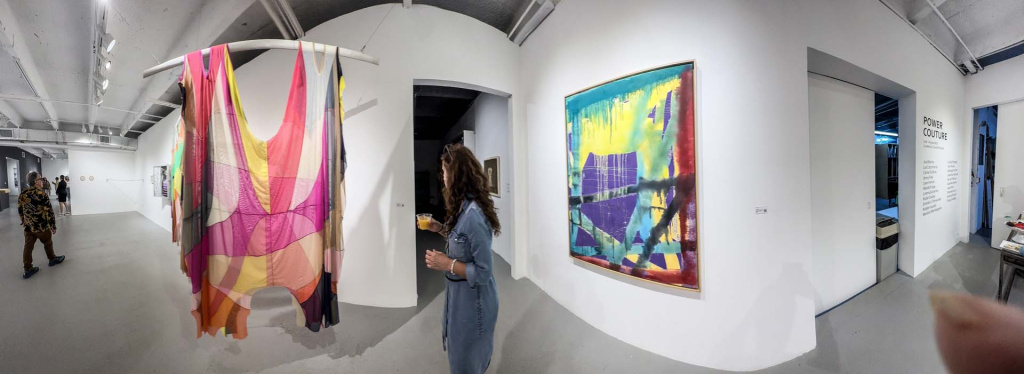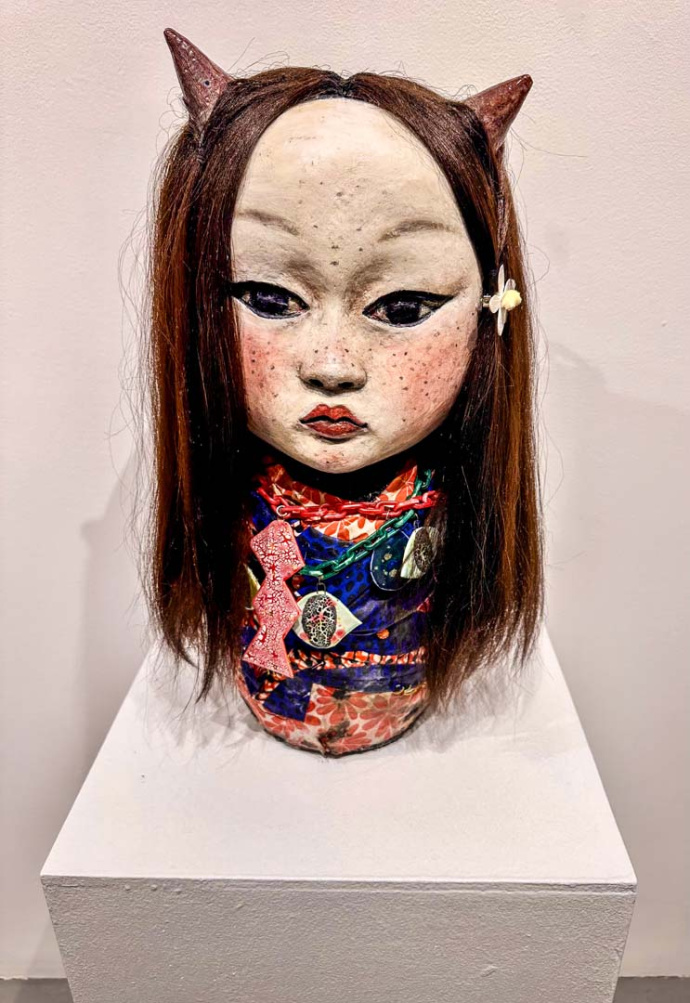Power Couture, curated by Claudia Taboada, attempts to conceptualize the relationship between art and fashion and to analyze the convergence of their languages in the discourse of power relations. Historically, the expressions of art and fashion have manifested themselves under certain socio-political circumstances. In the visual arts, this evolution may have been reflected in something as “simple” as a change in color or in a radical transformation of the medium of execution. In fashion, we introduce an aluminum corset and then a very mundane, but with great significance, “pants revolution” for women. Human skin has been the “canvas” on which attitudes, critical positions and social advances have been drawn.

Both fashion and art, in their haute couture and finest categories, have been an expression of nationalism, terrorism, surveillance and individualism, as well as a symbol of capitalism… but also of decolonization and a profound criticism of power and its mechanisms of domination (think the uniform gray outfits in Mao’s Revolution).

The exhibition presents works in dissimilar mediums, such as drawing, painting, sculpture, objects, videos, and installations, with historical documentation and photographs as a reference. It also contains, on a physical or representational level, artist-designed actual clothing items and allusions to brands from the fashion world.

Artists: José Benito, Los Carpinteros, Ryder Cooley, Carlos Estévez, Jenny Feal, Ernesto J. Fernández, León Ferrari, Wanda Fraga, Lorena Gutiérrez Camejo, Roldán Lauzán, Mariana Monteagudo, Cecilia Paredes, Ivan Perera, Santiago Porter, Lisandra Ramírez, Sandra Ramos, Gabriela Reyna, Jorge Ríos, Graciela Sacco, Katrin Schnabl, and Tracey Snelling.

The Entrance Room was dedicated to the work of fashion designer Kiki Borlenghi (Brera Art Institute of Milan) and her mentor Germana Marucelli.
ErtWork
[supsystic-gallery id=104 position=center]
